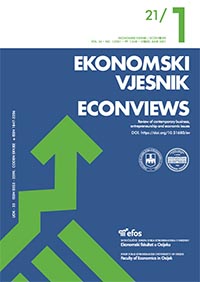Using ANFIS in joint dynamics of monetization, financial development, public debt and unemployment analysis
Using ANFIS in joint dynamics of monetization, financial development, public debt and unemployment analysis
Author(s): Sonja Brlečić Valčić, Ante Samodol, Marko ValčićSubject(s): Labor relations, Economic development, Human Resources in Economy
Published by: Sveučilište Josipa Jurja Strossmayera u Osijeku, Ekonomski fakultet u Osijeku
Keywords: monetization of economy; financial development; structural problems of unemployment; ANFIS;
Summary/Abstract: Purpose: The modern concepts of contemplating joint dynamics of monetary policy effects on economic growth and its indicators require an indirect approach based on empirical research of mainly financial infrastructure, competitiveness of the financial markets and current economic conditions. Meanwhile, the problems of unemployment and the structure of employment within these concepts are most frequently linked with the polarization of the labor market and two important factors, that is, the effects of growth on unemployment and the fact that technological changes affect the changes in salary ranges.Methodology: By using the Adaptive Neuro-Fuzzy Inference System (ANFIS) and the set of data from 1995 to 2016, this paper analyzes these issues through a prism of established balances between the labor and financial markets, i.e., the monetization of economy (M1/GDP), financial development (Loans/GDP) and the share of gross government debt in GDP (government gross debt/GDP).Results: The proposed model suggests that the rate of unemployment is conditioned by the financial cycle and monetary policy (M1/GDP, Loans/GDP), as well as the business cycle and fiscal policy (gross d/BDP) and that a controlled and properly directed level of monetization of the economy (M1/BDP) and financial development measured as Loans/GDP can be “sufficient” for economic growth.Conclusion: Waiting in the “monetary union lobby”, i.e., waiting for the ERM II exchange mechanism can last longer than the set deadlines, leading to the need for Croatian economic policy to optimize monetary and fiscal policy measures in order to increase economic growth and reduce unemployment.
- Issue Year: 34/2021
- Issue No: 1
- Page Range: 23-40
- Page Count: 18
- Language: English

